Welcome to British Columbia (Canada) Road Lines & Pavement Markings
Understanding road lines matters; not only to be able to pass pesky tests to get your driver’s license and resultant freedom, but also to, you know, stay out of trouble while you are driving, and get from A to B in one piece.
In this guide, we’ll dive into the road line meanings from a beautiful British Columbia (Canadian) perspective. For similar articles, check out my epic article about the Road Signs of Canada or How to Drive Defensively and Prevent Collisions.
Road Lines Introduction
- Yellow road lines are used to separate traffic moving in opposite directions
- White lines are used to separate traffic moving in the same direction
Yellow Road Lines Separate Traffic Moving in Opposite Directions
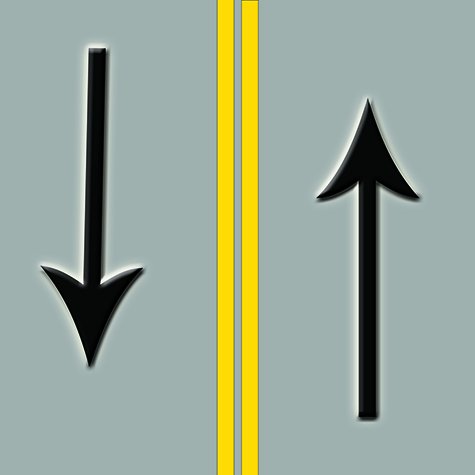
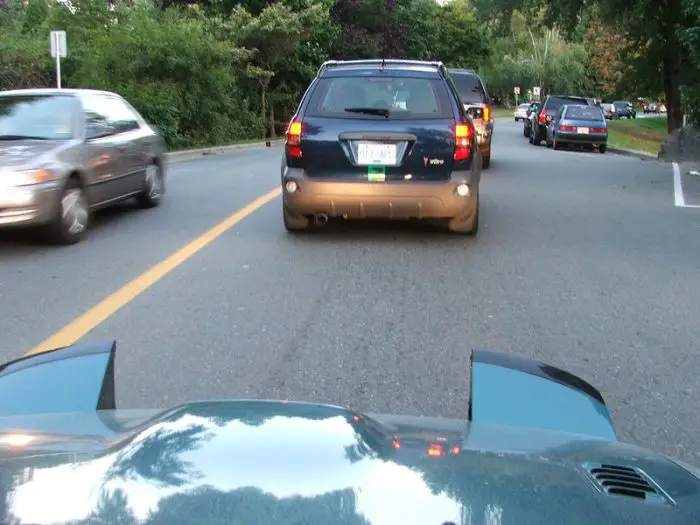
White Road Lines Separate Traffic Moving in the Same Direction
White lines – separating traffic traveling in the same direction – can be found on:
- One-way streets
- Freeways
- Highways
- HOV Lanes
- Multi-lane roads

The Yellow Road Line Should Always Be To Your Left
This is a generalization of course. But it’s true, that unless you are passing, or crossing this line to turn left, it should be to the left of you.
That’s how you know you’re on the “right” side of the road. Literally.
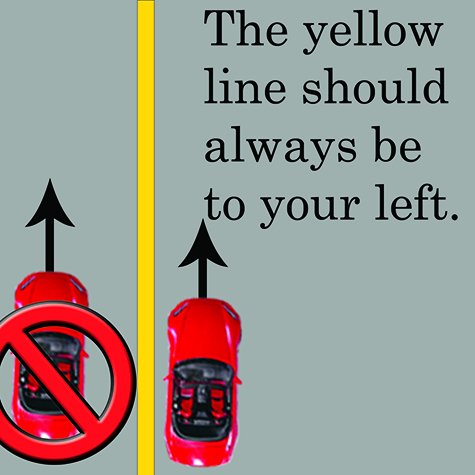
This Jeep here (pictured below) is totally on the wrong side of the road. But hey let’s look at the bright side, at least it stopped at the red light; that does count for something if you ask me.
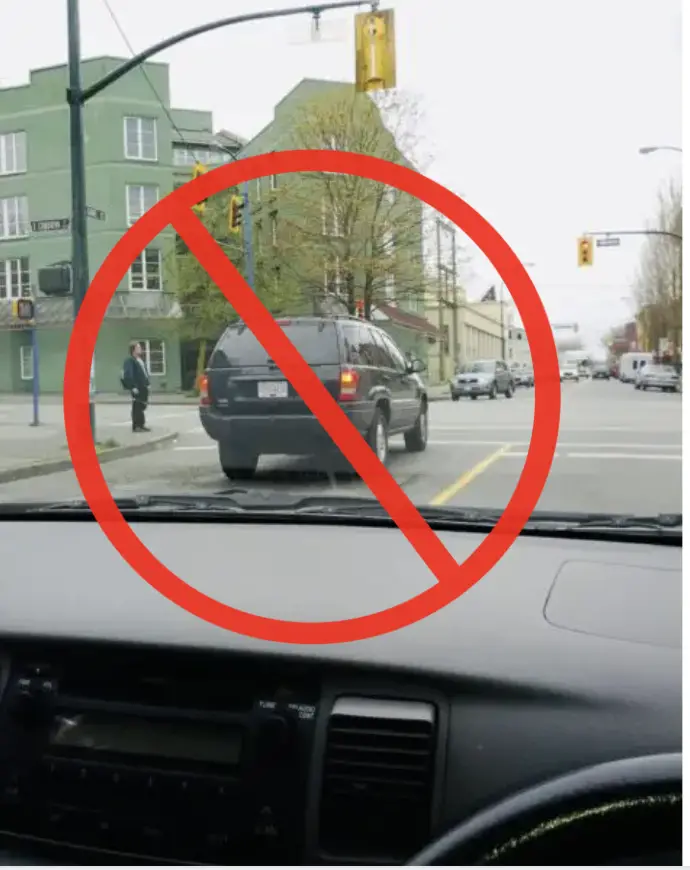
White Road Lines – Broken/Dashed
Awe, broken lines? We’re all a little broken, aren’t we? Oh never mind, I will speak for myself…
Broken, also known as dashed or dotted white road lines, mean that you’re allowed to change lanes when it’s safe.
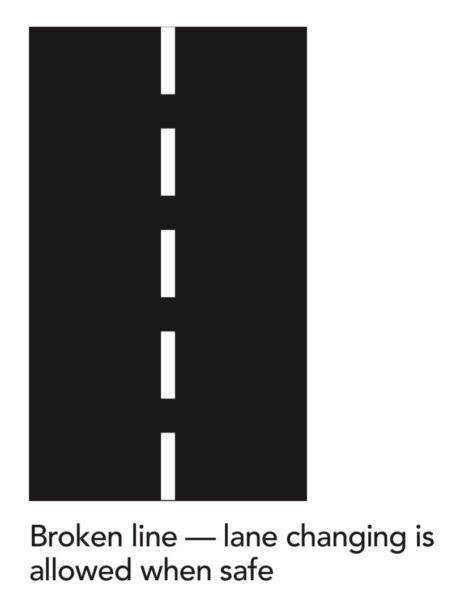
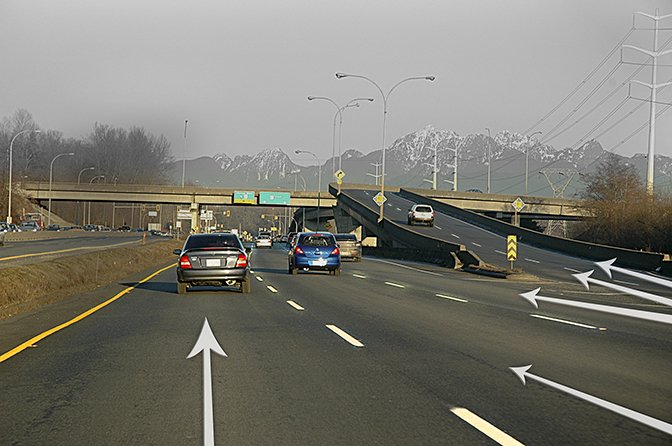

White Road Lines – Solid White Lines
Solid white road lines simply mean: Do not change lanes. As a reminder, white lines separate traffic moving in the same direction.
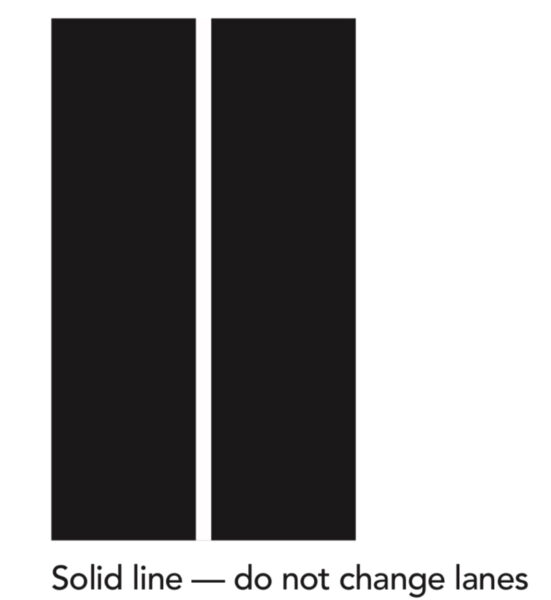
Changing lanes in the middle or before an intersection is dangerous, so these lines are here discouraging the action. And since you’re wondering, changing lanes in an intersection is not technically illegal in British Columbia because there is no law written against it; but of course, that’s no good reason to do it.
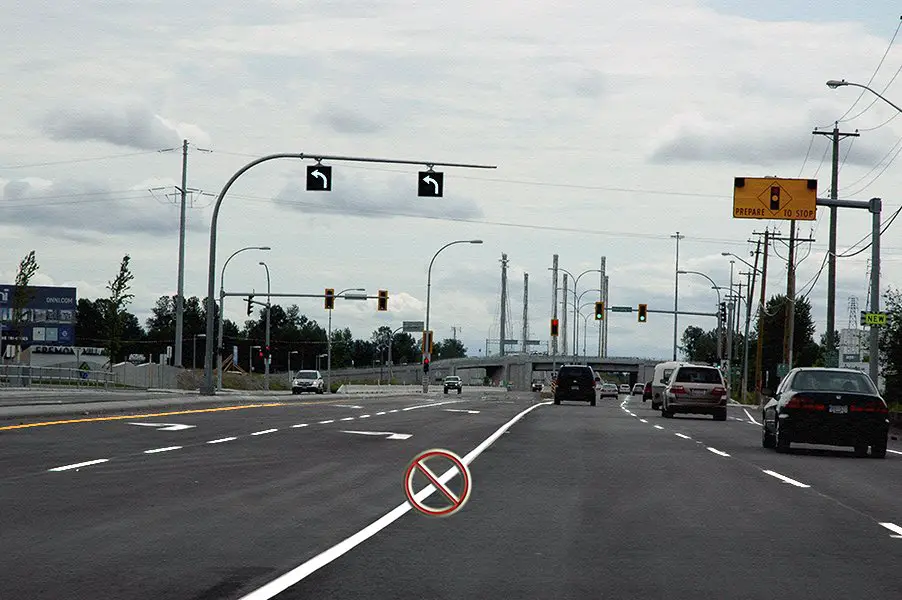
White Lines – Speed Reduction Markings (also known as Optical Speed Bars)
Question: What are those short white lines drawn perpendicular to the yellow line on the road?
Speed reduction markings are situated across lanes on the road; stripes are spaced at gradually decreasing distances. The idea for using them is to increase drivers’ perception of speed. The goal is to get drivers to reduce their speed.
As the spacing between the bars gradually narrows, drivers sense they have increased speed. This – in theory – will cause them to slow down to keep the same time between each set of bars.
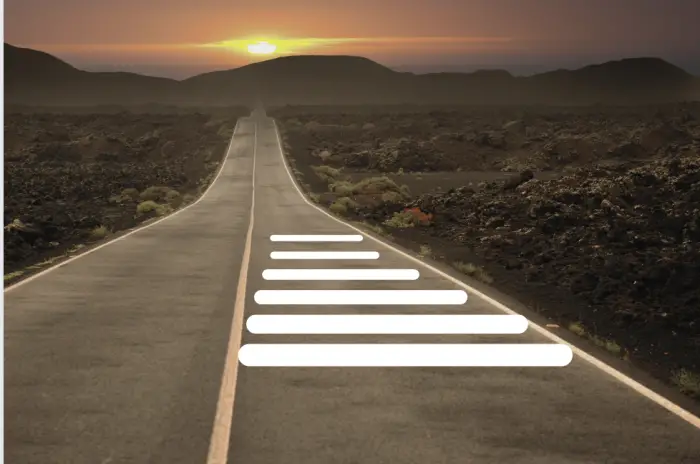
Yellow Road Lines – Single Solid Line
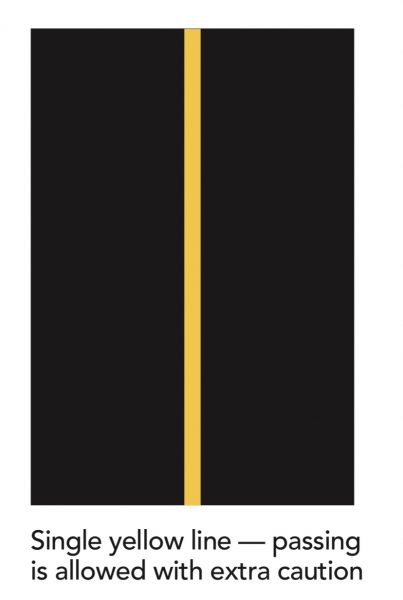
If you’re driving on a highway or road and you have only one solid yellow line, you are allowed to pass another vehicle at your discretion.
A lot of people seem to think passing isn’t allowed, but it’s technically allowed over one solid line. You can also turn left across this line into a driveway, lane, parking lot, or somewhere else.
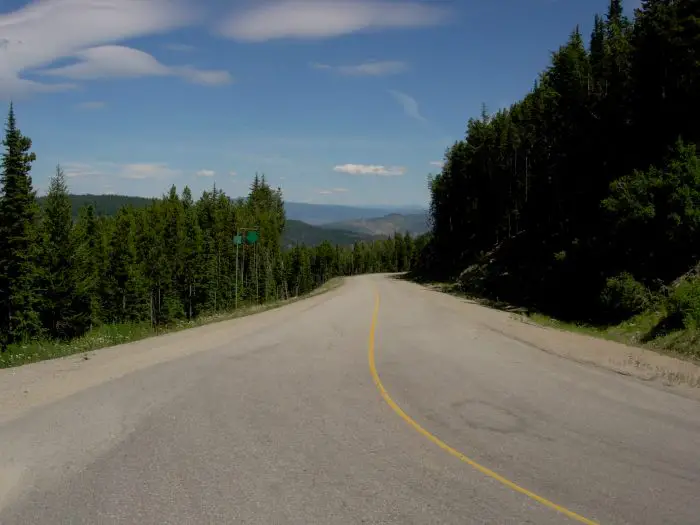
Yellow Road Lines – Broken/Dashed Lines
Passing is allowed over these broken yellow lines.
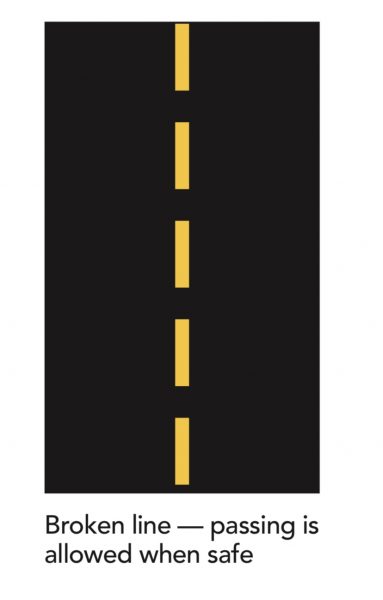
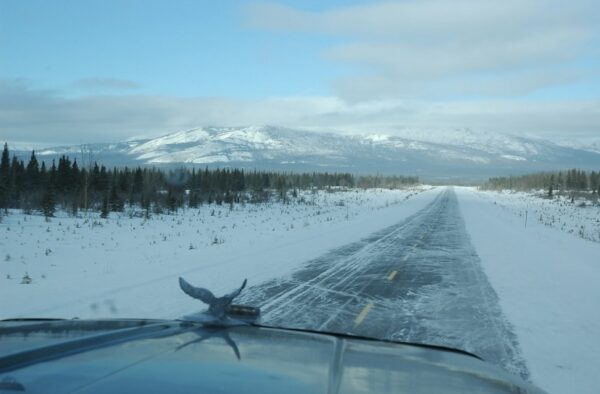
Yellow Solid Road Lines – Double Solid Yellow Lines
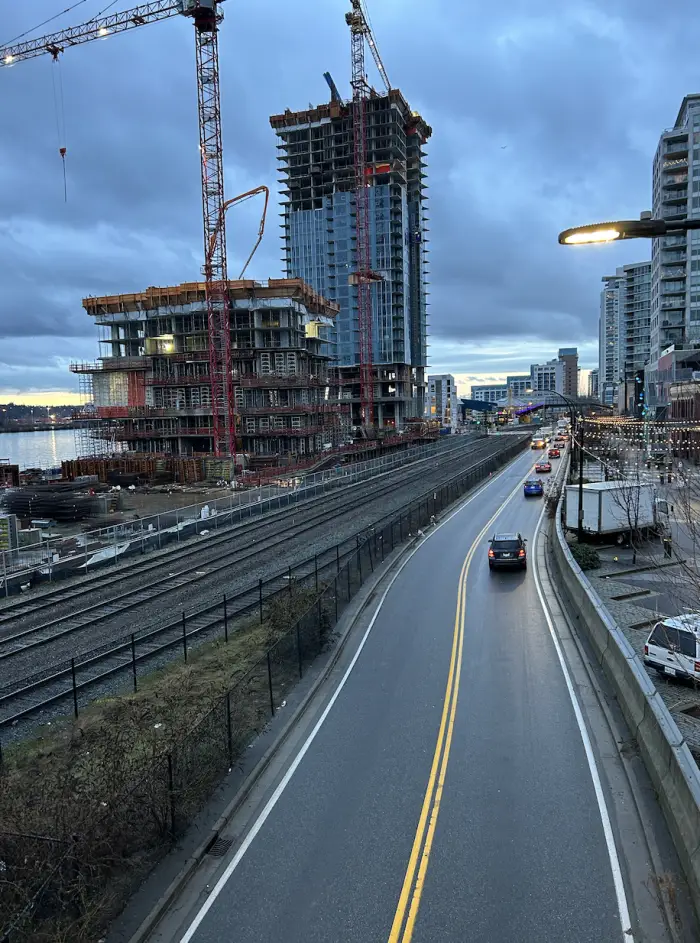
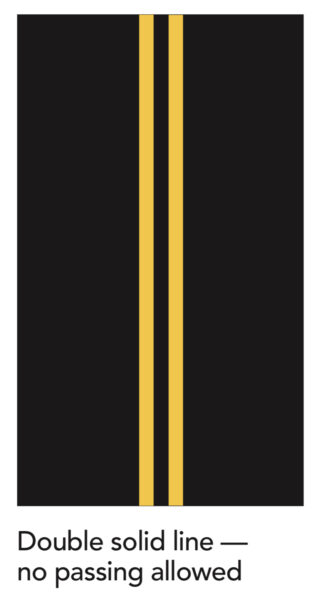
Double solid yellow road lines are where it is positively illegal to pass another vehicle.


Yellow Road Lines – Solid Yellow Road Line With a Broken Yellow Road Line
If the solid road line is closest to you, it is illegal for you to pass
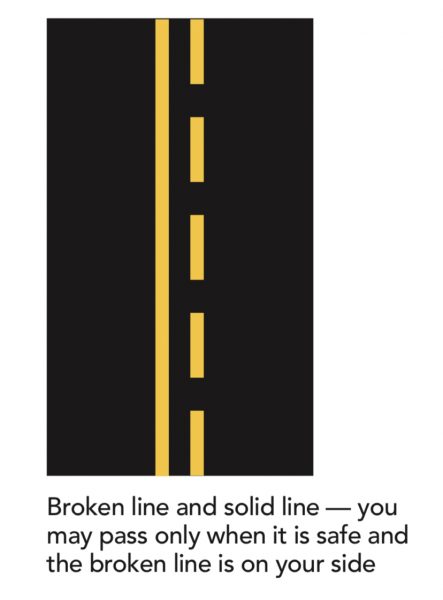
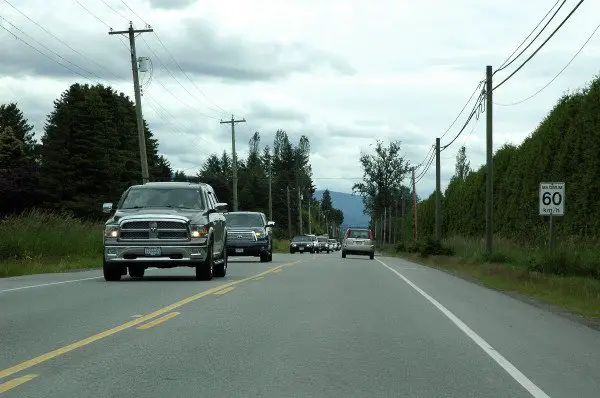
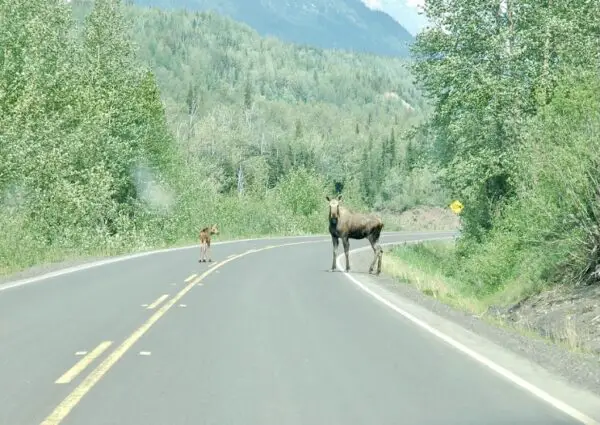
Yellow Road Lines – Double Yellow Broken Road Lines
A lane surrounded by yellow broken lines is reversible.
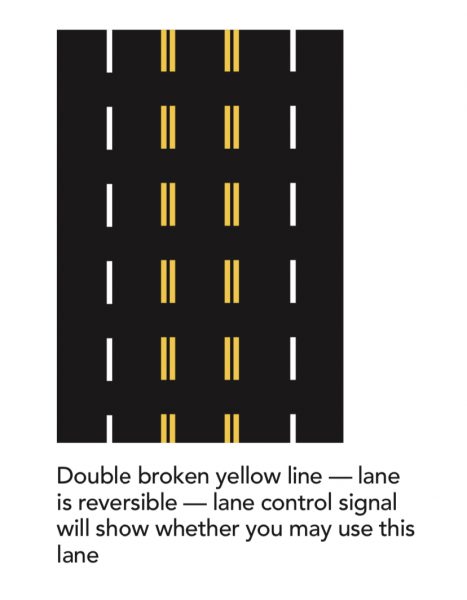
Drivers must watch for overhead signals to determine direction. These are a bit less common than the other types of road lines.
Lane Control Signals
Here are the lane control signals that go together with the reversible lane, almost like wine and cheese. They will be posted above the reversible lane.
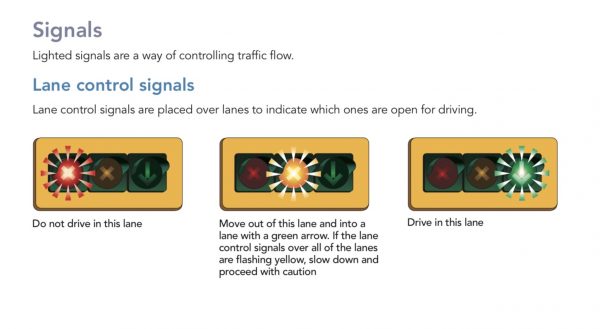
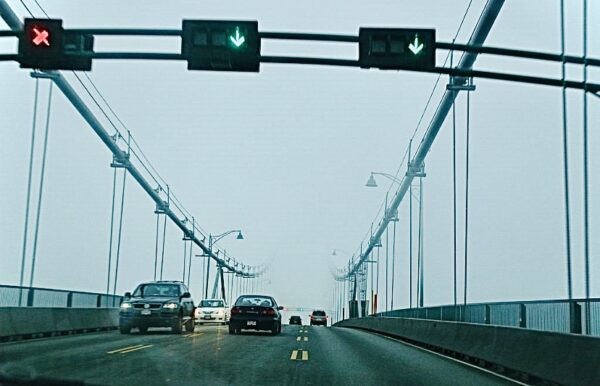
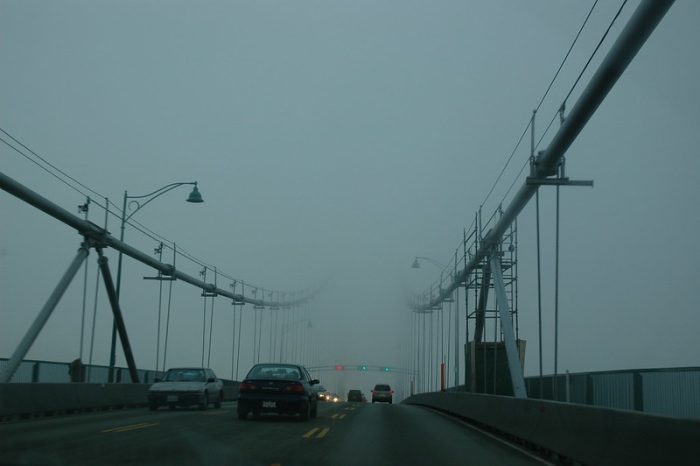
Two-Way Left Turn Lane
This is another somewhat uncommon lane. It’s a shared left-turning lane. So, drivers in both directions can use this lane to turn left.
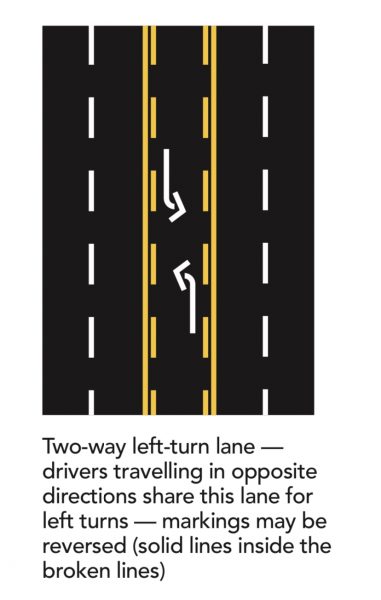
White Stopping Lines
This is commonly seen at crosswalks and at stop signs, reminding drivers to stop. It may or may not always have a stop sign with it, but it means stop nonetheless.
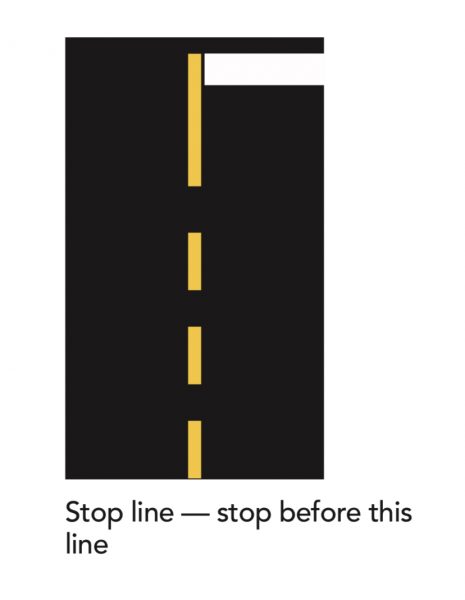
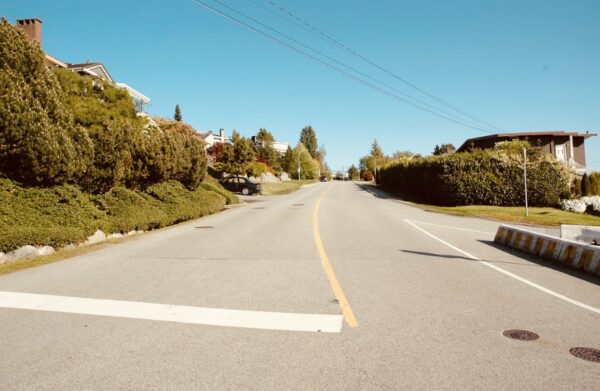
Pavement Markings – Crosswalks
There are several different designs for crosswalks. In any case, drivers must yield to pedestrians in the crosswalk.
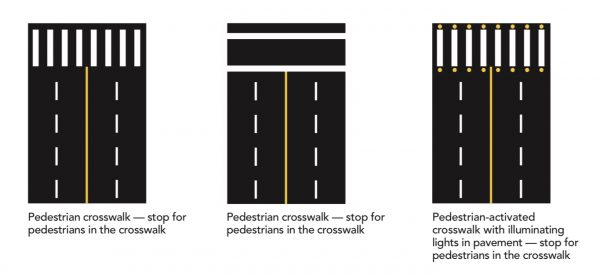
Pavement Markings For Turns
These pavement markings mean that you must go in the direction of the arrow.
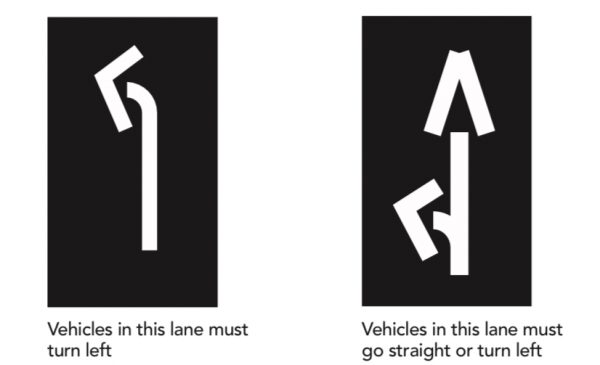
Since these are pavement markings, sometimes you can’t see them because, well, there are vehicles stopped on top of them. This happens when waiting for a red light, for example.

In that case, you can look above you or around you for the equally informative lane use signs; which, let’s be honest, you kinda should be looking for anyways.
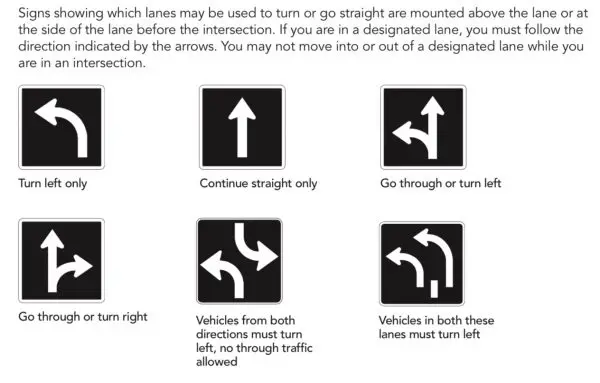
Pavement Markings – Painted Island

We are not supposed to drive on painted islands.
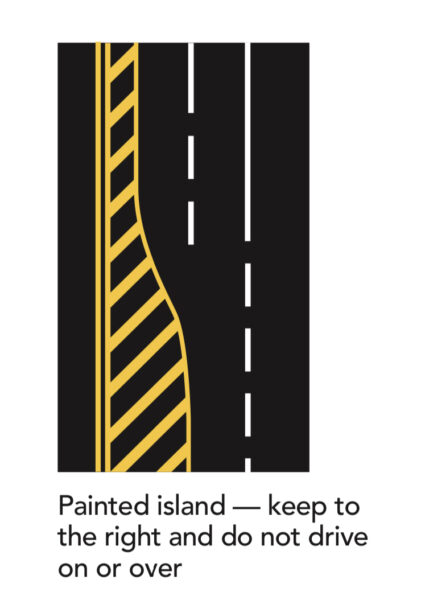
Reserved Lanes (HOV – High Occupancy Vehicle)
HOV or high occupancy vehicles can use these lanes, as well as buses, motorcycles, and cyclists; some lanes even allow electric vehicles. Check for signs and markings that let drivers know who can use the lane, and when.
General cars aren’t allowed in the lane unless there is a sign indicating the times.
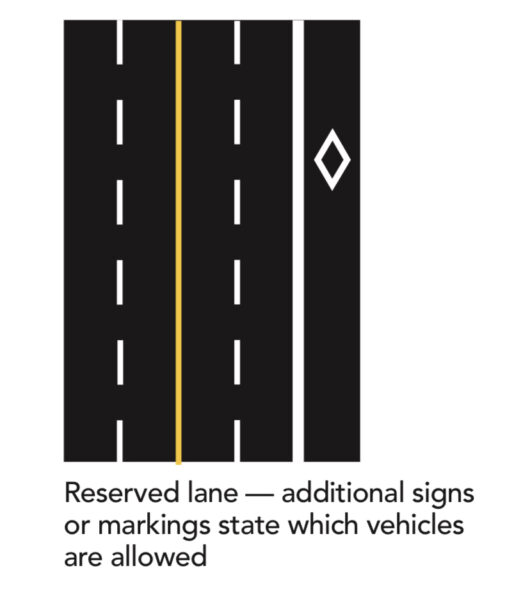
Bicycle Lanes
Bikes must travel in the same direction as the vehicles on their side of the road.
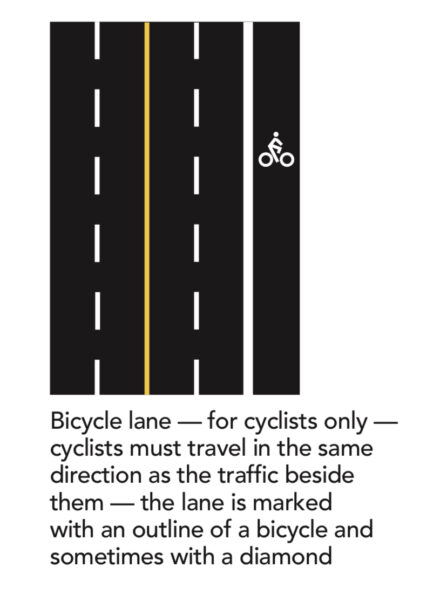
Pavement Markings – Pop Quiz
How Can Pavement Markings indicate that you are driving in the right direction?
Pop Quiz! If you are driving on this one-way ramp and you see these lines, which direction should the car be going? Is it traveling toward us or away from us?
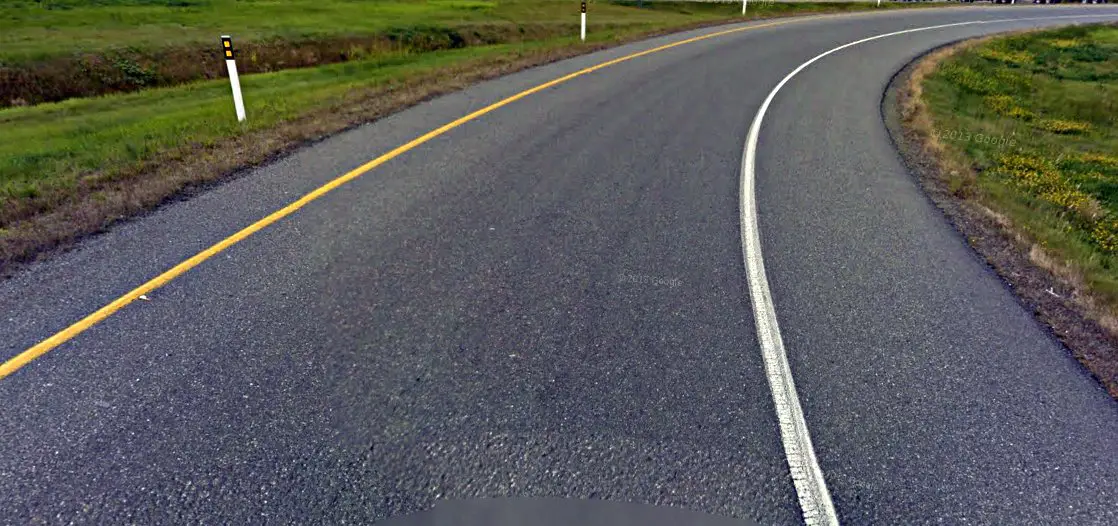
If you guessed this way, then you’re correct
Remember that the yellow road line should be on your left. If the yellow line is on your right, then you’re on the wrong side of the road.
This is how pavement markings can indicate that you are driving in the right direction.
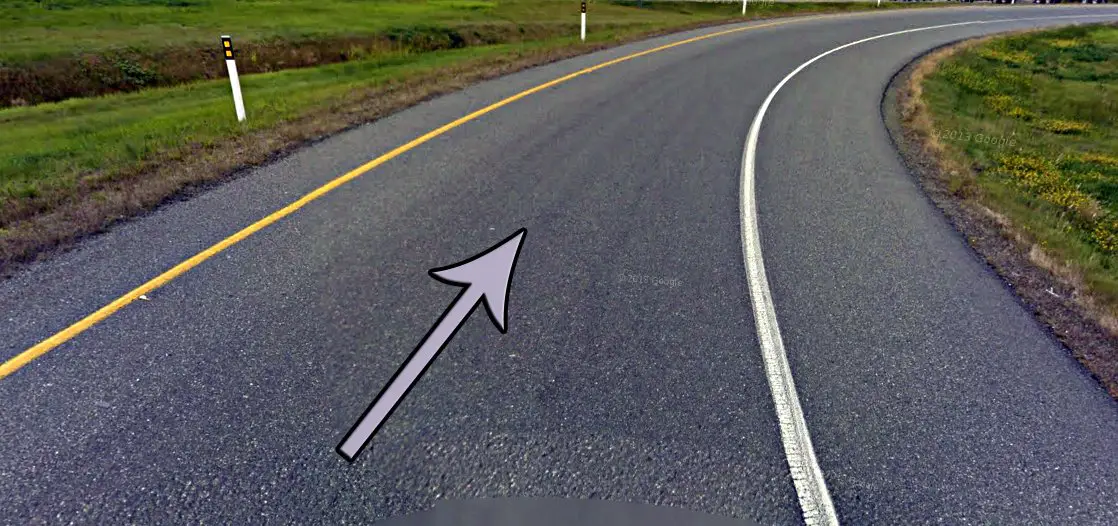

Lines on Private Property
Please note that on private property these guidelines may differ. For example, there might be a white line separating traffic moving in opposite directions (normally we would expect a yellow line for this).
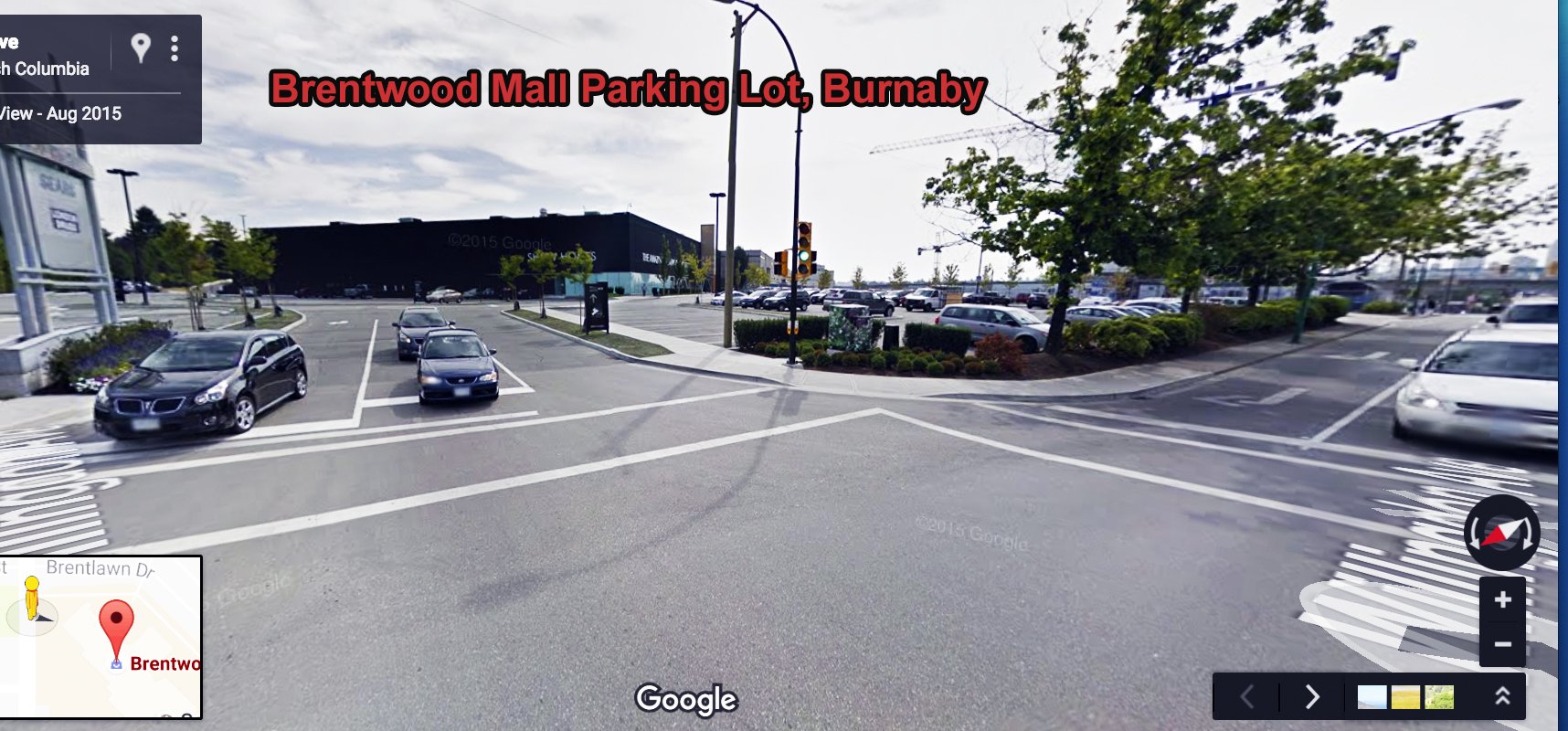
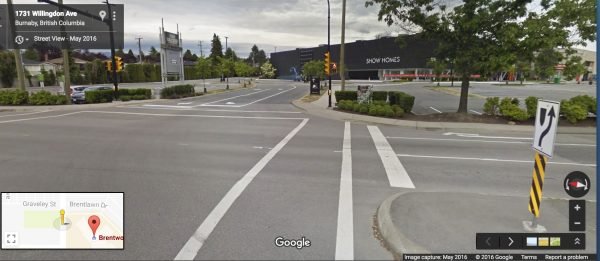
Carmen Cohoe
Carmen became a driving instructor in beautiful North Vancouver at the age of 22 due to some crazy people who agreed to hire her. After that, there was never a dull moment teaching many different folks from many different places how to drive using automatic and standard vehicles and a minivan.



Informative article, Thanks
looking at the two way left turn lane above my husband driving a delivery box truck came out of a driveway on the right side of that lane turning right not even going into the lane mentioned but a lady came out of a driveway maybe a car’s length down on the left side of the lane turning left then went all the way across the 2 way left turn lane into the lane my husband had turned into apparently trying to get ahead of him! she side swiped my husband’s front bumper. She is saying he hit her but is she in the wrong coming out the way she did without turning into the 2 way left turn lane first then merging out into the traffic. He saw her stopped at the driveway when he proceeded out to make his turn & even noticed a car driving the opposite way of him towards her. It seems she sped out of the driveway in front of that car & then rushing to even get in front of my husband! Of course, the police would not come due to no one injured but it seems definitely she is in the wrong! She is saying he hit her in the side back door & fender. Is she in the wrong just for not turning into the lane to merge into the lane he was already in?
It’s interesting how different countries and areas do road line marking so differently! Here in the states, you’re not ever supposed to cross solid yellow lines, yet in British Columbia apparently you’re allowed to pass as long as you’re careful. However, some things are similar, such as not being able to pass across the double yellow solid lines. I’d love to see what other similarities and differences there are in other countries!
http://www.pelicanlinemarking.com.au/
Hi!! Yeah it’s interesting!! Hey maybe I should write a long post about that comparing all the different places and their lines.. thanks for the idea. It does make it confusing when travelling .. or having expectations of tourists :)
If your lane is changing to two lanes, do you need to signal to the one you plan to enter
Hi, it’s optional.. Technically you aren’t lane changing so you don’t legally have to, but sometimes it’s nice to do a quick signal out of courtesy to the drivers behind you.
If im taking a right in a lane with no bike lane beside, then as i sharply turn around the curb, a bike lane appears… Is this a problem that i did not notice the bike lane prior to turning, and do i gradually shift into the regular vehicle lane? (keep in mind that the bike lane turned into is solid white line, no dashes)
Do you mean you ended up driving on top of the bike lane? Yes generally before you do any turn you should check out where you are going to end up before you turn. You have to know where you’re going, it’s important, and you can’t make it up as you go as that’s not really safe or recommended practice. Once you realize where you’re supposed to be, though just make sure it’s safe and then move into the correct position…